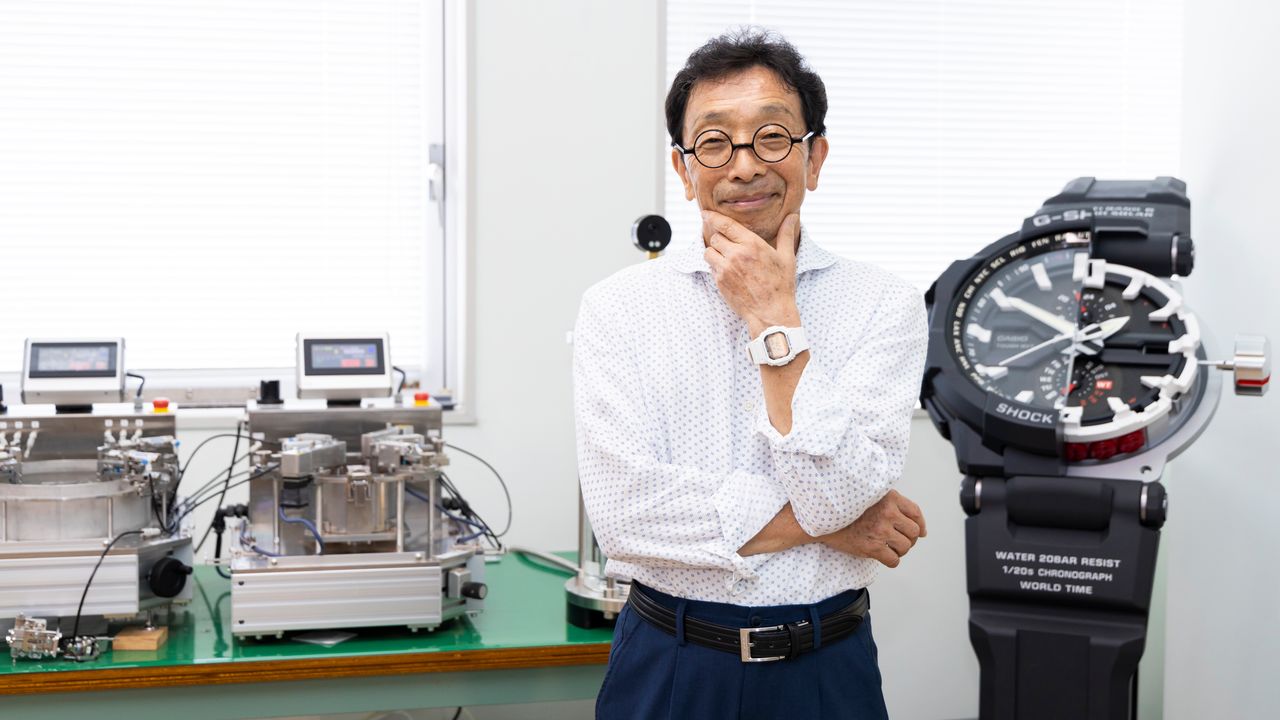
Tough and Timeless: Ibe Kikuo and the Development of the G-Shock
Fashion People Technology- English
- 日本語
- 简体字
- 繁體字
- Français
- Español
- العربية
- Русский
A Simple Concept
Ibe Kikuo was still an up-and-coming designer at Casio Computer when in 1981 he submitted a proposal that would give rise to the iconic G-Shock series of wristwatches. It consisted of a single straightforward concept: Create a sturdy watch that can survive being dropped. The inspiration for the idea was Ibe’s experience with less-than-durable timepieces. He knew others could relate to the disappointment of having a wristwatch smash apart on the floor after a fall or discovering that an inadvertent bump had cracked the glass. He was certain people would buy a watch that could withstand being knocked around, if he could just develop one.
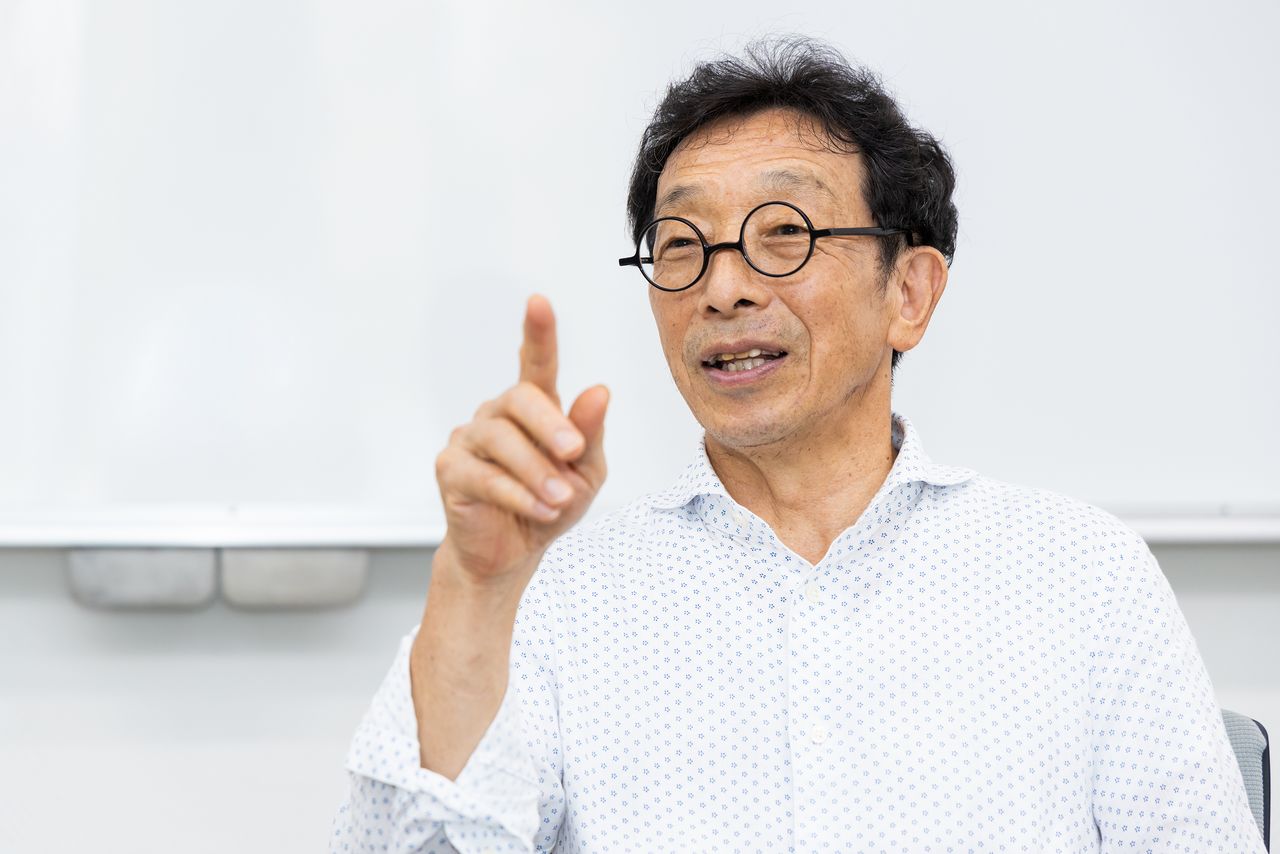
Ibe Kikuo headed the G-Shock design team at Casio. He now serves as a senior fellow at the company’s Hamura R&D Center in Tokyo.
Looking back, Ibe is still in awe of what he accomplished. “I’m the type of person who just runs with an idea,” he says. “I started with little more than a vague concept and took it from there. I never imagined that the watch would turn out to be so popular.”
Ibe recalls how a group of workers toiling at a construction site near Casio’s Hamura R&D Center gave him his first clue. He watched them go about their work, thinking that the vibrations and jolts from tools like shovels, sledgehammers, and jackhammers would wreak havoc on a wristwatch, and it was no surprise that no one at the site seemed to be wearing one. He thought that just like other workers, though, they would certainly want to keep track of things like their lunch and rest breaks and how much longer they had to go until they could knock off for the day. It was clear to Ibe that a watch that could survive the rough treatment of a construction site would have appeal, even if only to a certain subset of people.
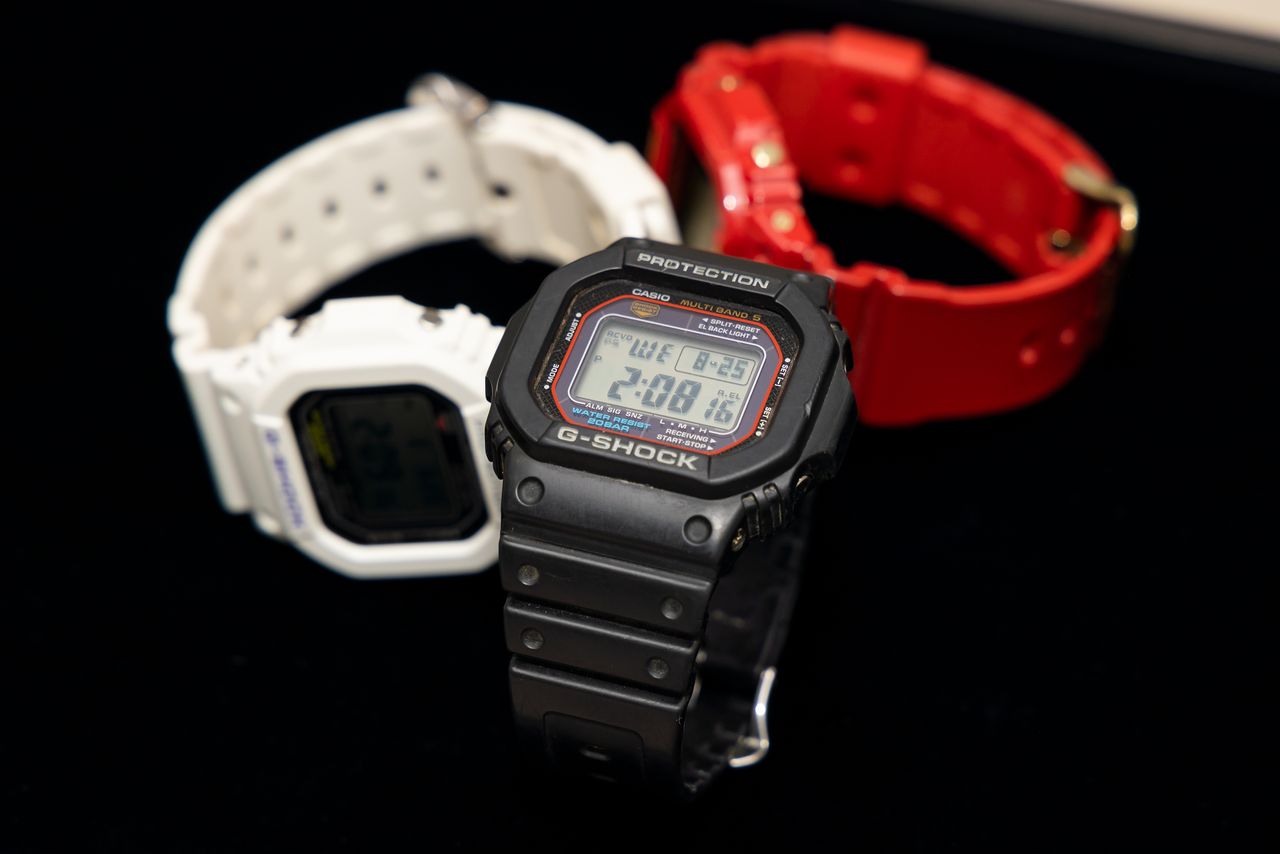
G-Shock models from Ibe’s personal collection. He rotates the time pieces, changing colors according to the season.
Struggle, Then Inspiration
Ibe formed an eight-member unit, dubbing it Project Team Tough, and set to work with the goal of creating a “triple 10” watch: one that could survive a 10-meter free fall, was water resistant to 10 bars, and had a battery that would last 10 years.
Progress was slow at first and tests of early prototypes were often primitive, including Ibe dropping test models out of a third-floor bathroom window. The team tried encasing the watch mechanism in shock-absorbent materials like rubber or polyurethane, but with disappointing results. They would strengthen one component, only to have a new problem pop up. After a year, Ibe and his colleagues had gone through more than 100 test models with very little to show for their efforts.

Ibe’s early “test lab” was a third-floor bathroom window from which he would drop prototypes onto the pavement below.

Today, researchers at the Hamura R&D Center use specially designed equipment to test the effects of impacts on watches.
Frustrated at the project’s lack of headway, Ibe reached the end of his rope and made up his mind to quit Casio. Having come into the office on his day off to organize his things, he took a break at a nearby park to clear his mind. It was there while watching a group of children play with a rubber ball that inspiration struck. He realized that rather than trying to rigidly armor the module housing the inner workings of the watch, as the team had been doing, he could guard the delicate mechanisms by suspending them in something similar to a rubber ball that would absorb the force of impacts.
Ibe and his colleagues worked on a whole new design in which the module was supported inside the housing at only a set number of points. This “float” construction remains the fundamental structure of G-Shock watches today. In 1983, after two years and more than 200 prototypes, the first G-Shock model, the DW-5000C-1A, went on sale.
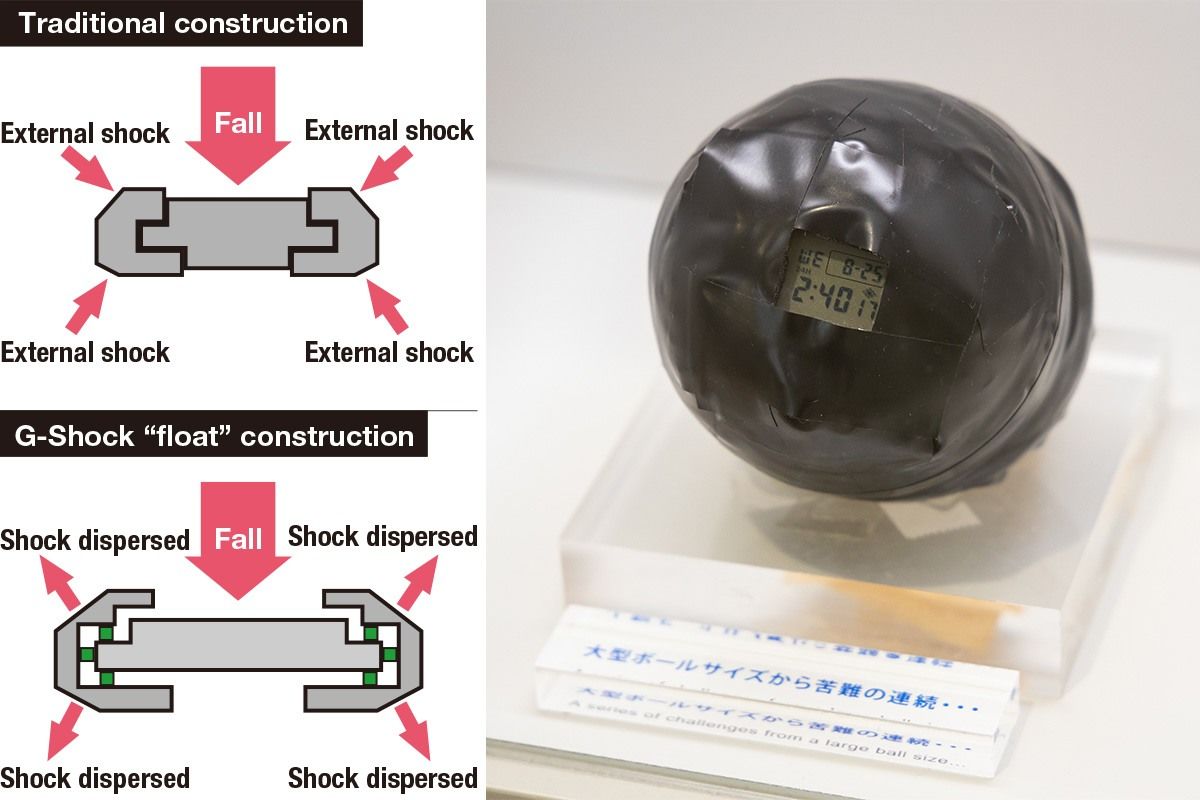
A traditional housing design compared to the G-Shock’s “float” construction (left) and a large, ball-shaped prototype.
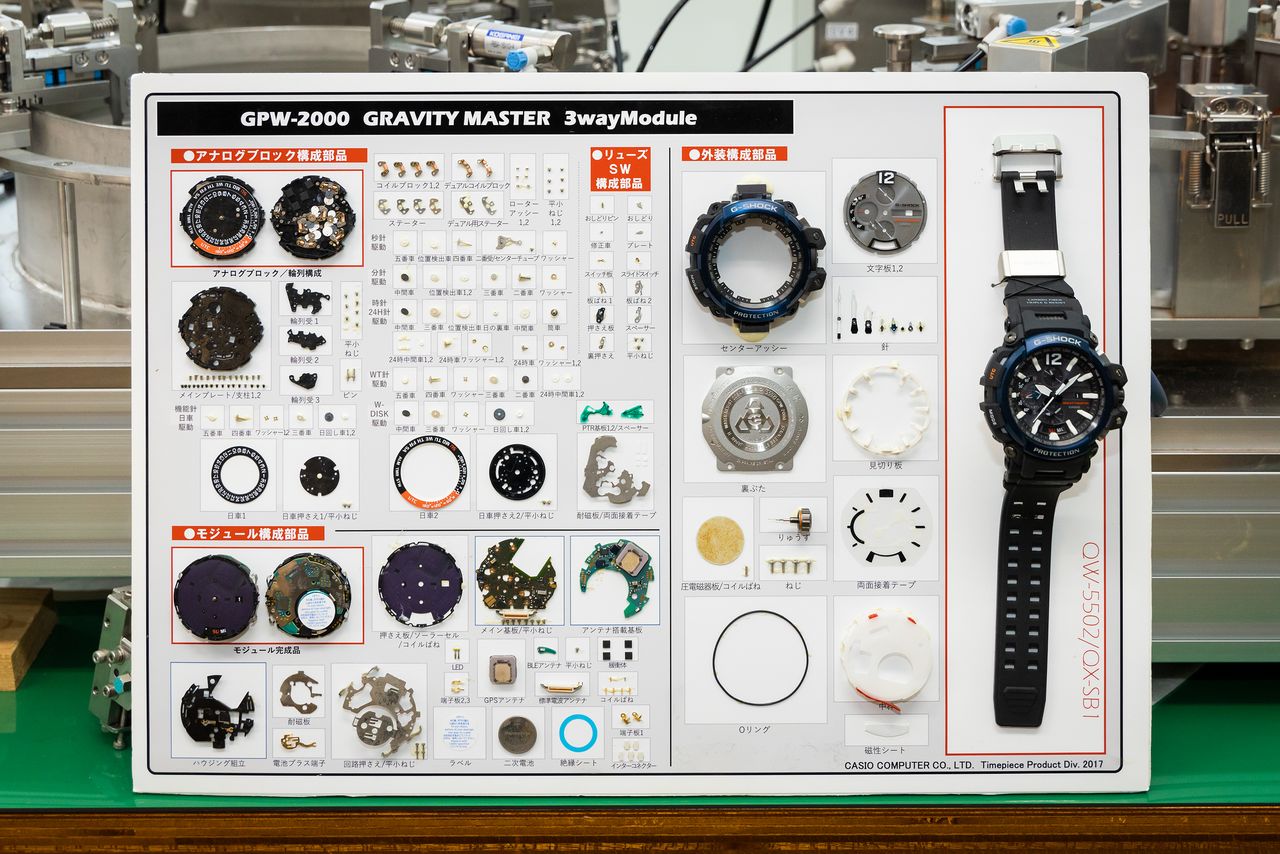
A display of the different components that make up a G-Shock. Designing the watches to be both shock resistant and waterproof posed a serious challenge for the production team.
Jumping the Pond
At the time, thin dress watches were the reigning fashion in Japan, and domestic customers at first showed only tepid interest in the new, bulky G-Shock. Watch sellers were equally suspicious of the timepiece. “Repairs were a lucrative part of the watch business,” recounts Ibe, “and vendors didn’t hide the fact that they considered an unbreakable watch bad for their bottom line.”
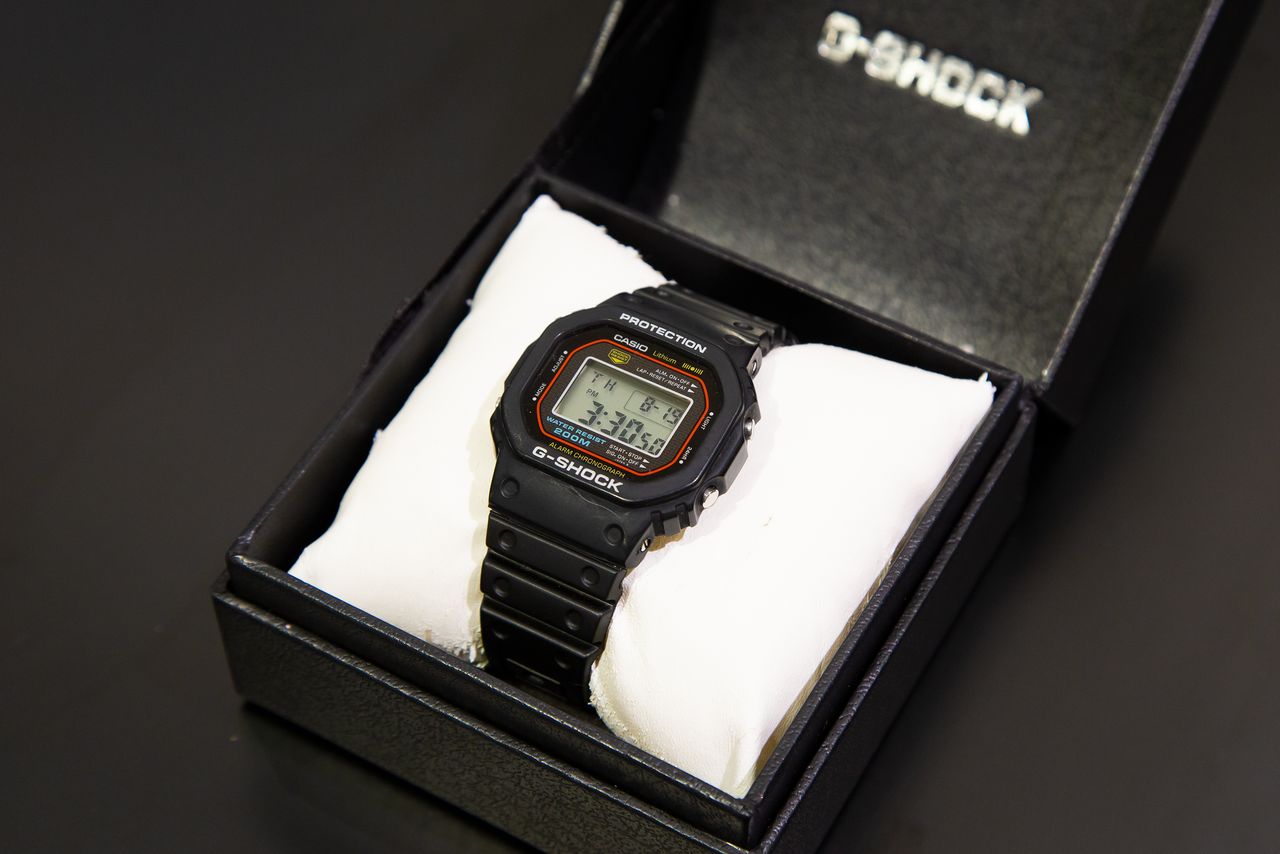
The only original G-Shock model in Casio’s collection. The watch retailed for ¥11,400 and was advertised as being durable enough to withstand the shaking of a jackhammer.
The response in the United States was markedly more positive. Casio caused a stir when it aired a television commercial that featured an ice hockey player firing a G-Shock into the glove of a waiting goalie. The advertisement was initially met with suspicion, but several well-known syndicated news programs validated Casio’s claims when they recreated the hockey scene for their viewers. With the sturdiness of the G-Shock established, American sales started to grow.
Despite this early success, Ibe, who had been put in charge of a different project at Casio, thought the novelty would eventually wear off. Part of his reasoning was the watch’s price. “The Casio brand wasn’t all that well known overseas yet,” he explains. “Customers demanded high quality at a low price. One of our clients even warned us that anything priced above 4,000 yen wouldn’t sell.” The G-Shock retailed for more than ¥10,000. ”I was convinced that sales would eventually dry up, not take off globally as they did.”
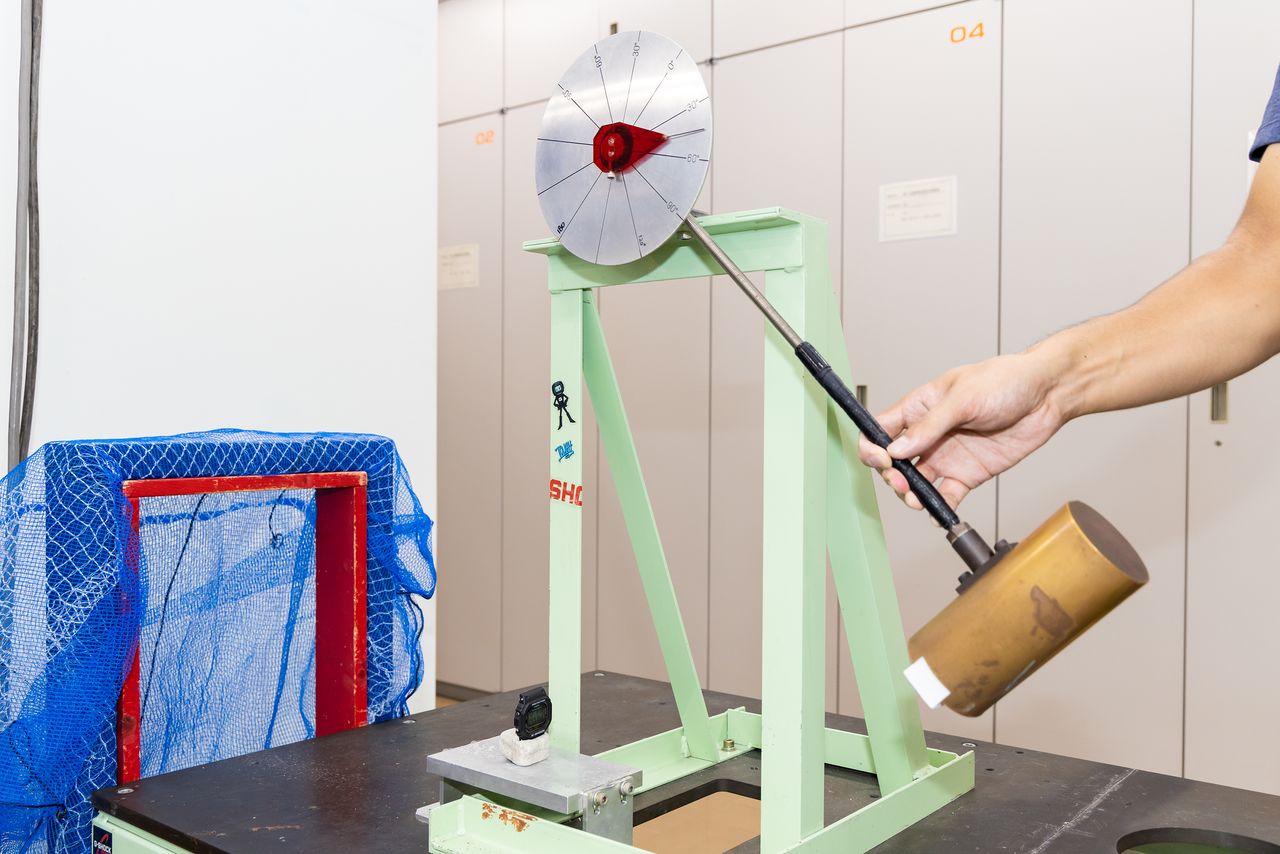
A specially designed testing apparatus uses a five-kilogram hammer to test the shock-absorbing abilities of a G-Shock by administering a bone-breaking blow.
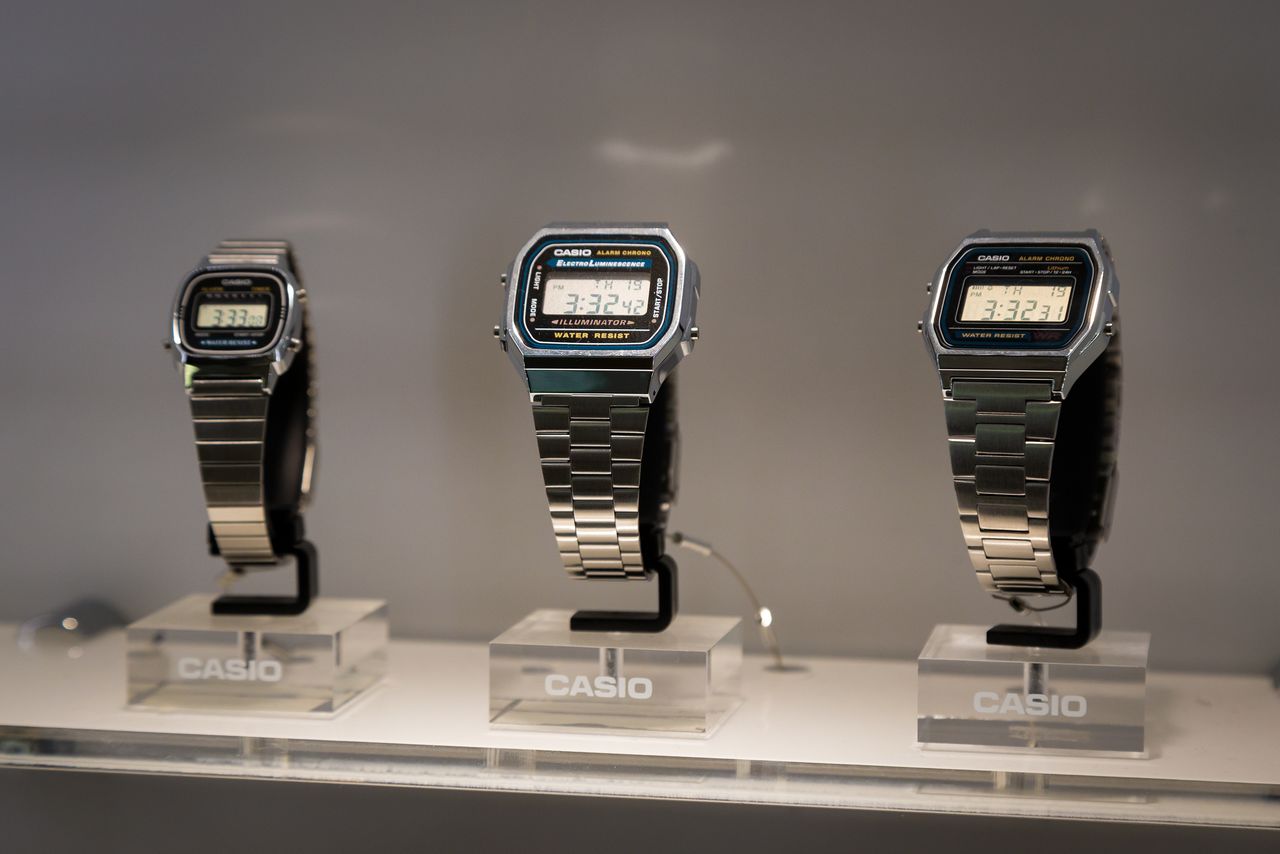
Alongside the G-Shock, Casio offered a series of inexpensive digital watches priced around ¥3,300.
The G-Shock Age Arrives
In the 1990s, bulky G-Shock models with round cases instead of the typical octagon shape started to gain traction in different areas of youth culture, going particularly well with the baggy style of American street fashion that was popular at the time. The watches were also sought-after items by members of the active set, including skateboarders, who revered the rugged look and durability, as well as the surfing crowd, who wore the watches both in and out of the water. With the arrival of urban fashion in Japan, Japanese consumers also started to take interest in the G-Shock brand.
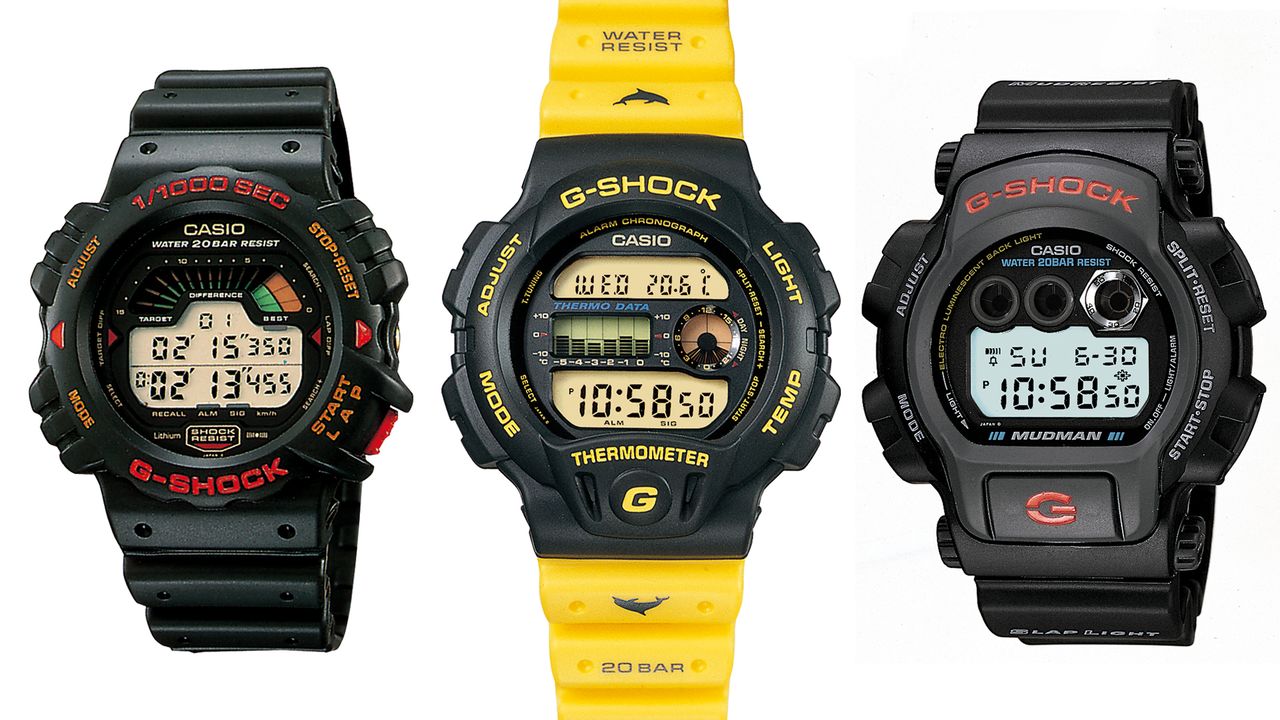
From left: The DW-6000GJ-1 came out in 1990 and was the first model with a round design; the DW-6100W-9 featuring dolphin and whale icons was released in 1994; the DW-8400-1 Mudman debuted in 1995. (Courtesy of Casio)
The breakout success of the G-Shock ushered in a new era for Casio. Ibe says he and his team did not have time to enjoy their long-awaited moment of triumph, though. “Demand went through the roof and we had sellers shouting at us to hurry up and get new watches out the door,” he recounts. The company ramped up production, but models were flying off store shelves faster than they could make them. “Everyone was in a panic. Out of desperation, the front office even went so far as to impose a G-Shock ban on employees.”
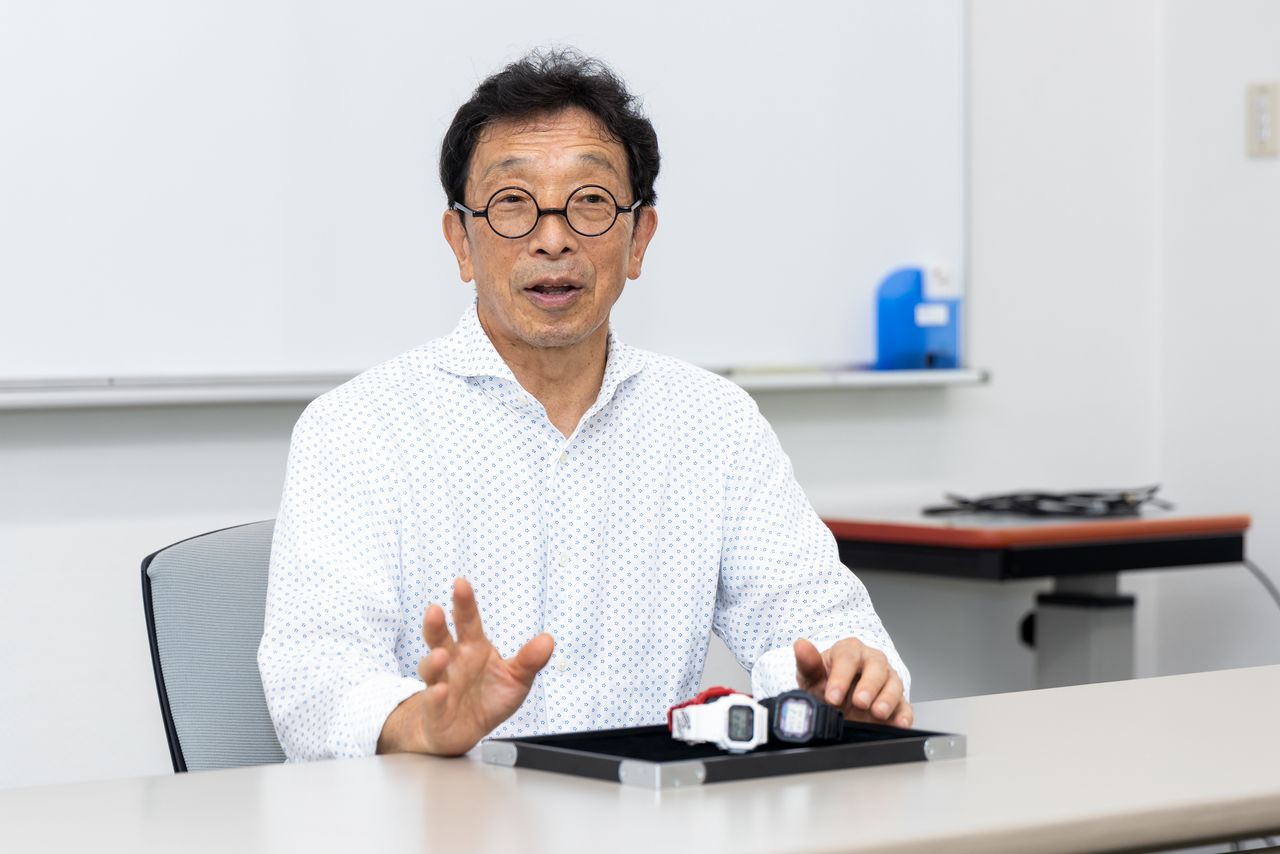
Ibe recounts the early ups and downs of Project Team Tough.
Building the Casio Brand
The G-Shock’s newfound success spurred Ibe to change his focus to building Casio’s brand awareness. For years, the firm had remained under the watch fashion radar, selling only a line of inexpensive digital wrist watches. Now that the higher priced G-Shock had taken off, he was determined to make Casio a global brand.
One of the production team’s first endeavors in this new period was an all-metal G-Shock designed to be worn at the office or when out on the town. The switch from resin to materials like stainless steel presented a challenge in duplicating the shock-resistant design, but Ibe and his team eventually struck upon a solution, with the new model hitting store shelves in 1996. Targeting young professionals, the MRG-100 sold for around ¥40,000 and marked Casio’s first foray into the midrange watch market.
Along with G-Shock, Ibe also had a hand in developing high-end series like the Casio Oceanus, launched in 2004 at a price of ¥60,000. At its debut, it also featured an all-metal body, which had been technically challenging to achieve, as well as a solar charging unit and radio-controlled automatic time correction.
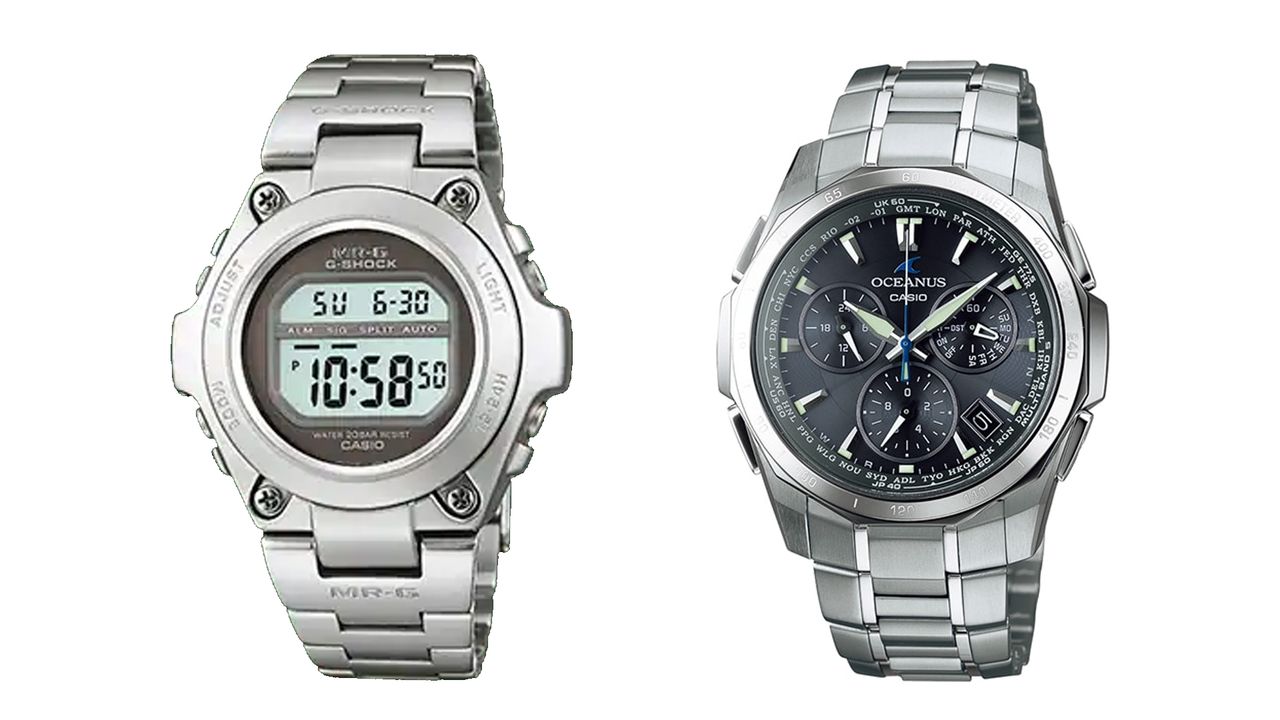
From left: The 1996 G-Shock MRG-100 and the first Oceanus Manta model, the 2004 OCW-S1000. (Courtesy of Casio)
Building the Casio brand has kept Ibe busy outside the workshop as well. Since 2008, he has appeared regularly at “Shock the World” G-Shock fan events held in different cities around the globe. “It’s important to convey the back story of a product,” he declares. “It raises the value of the brand in people’s eyes.”
Ibe has visited more than 30 countries and is known for memorizing his presentations in the local language to make a deeper connection with listeners. “I’m actually terrible at languages,” he admits, “but people show up expecting to hear me speak in their tongue, so there’s no quitting now.” During his presentations he always stresses the importance of having grit. “I try to impress on attendees that they should never, ever give up.” Ibe feels that giving his presentations in the language of the listeners helps drives this point home.
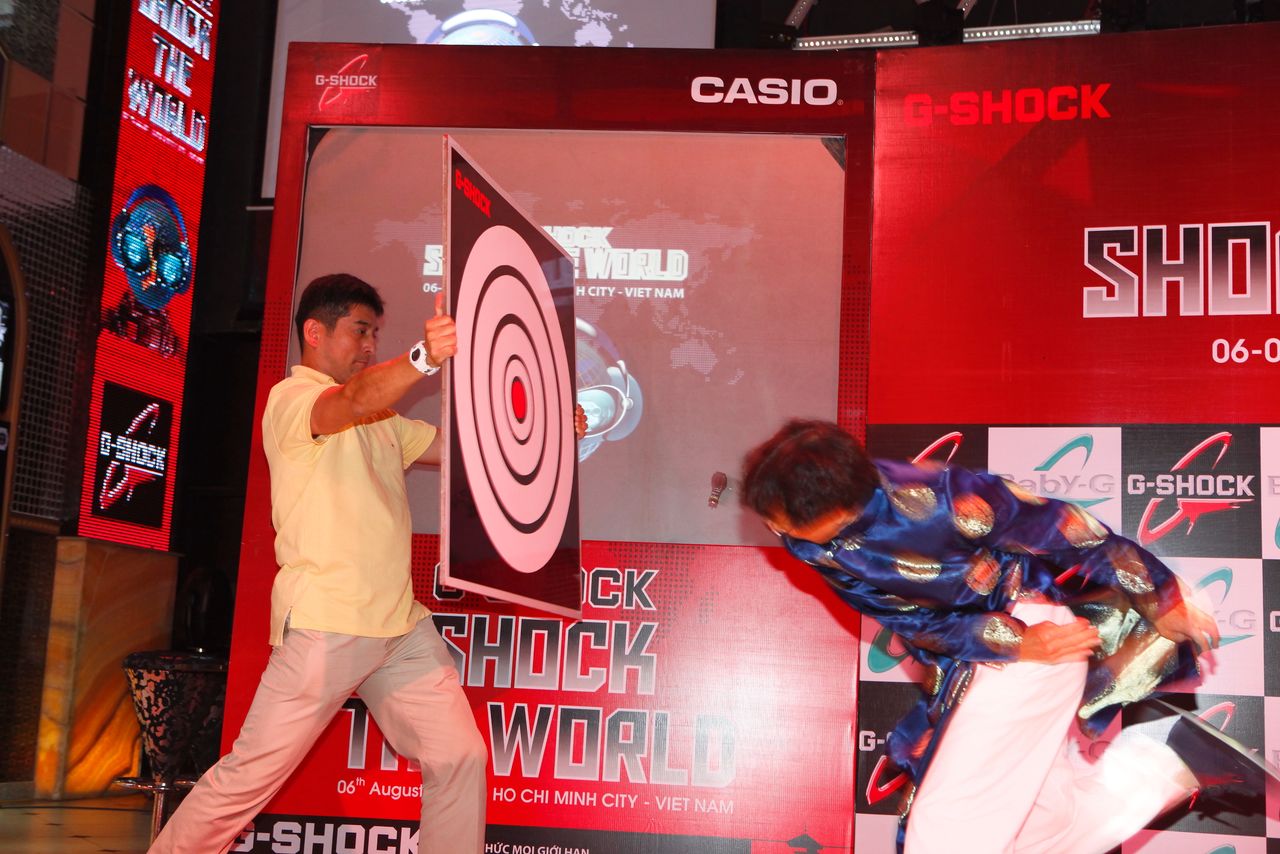
Ibe hurls a G-Shock against a board during a “Shock the World” fan event in Vietnam in 2011. The popular performance has become a mainstay of the gatherings. (Photo courtesy of Casio)
Expanding into New Realms
Casio has continued to expand the G-Shock series with new designs and functions. Building on the success of its midrange models, the company has ventured into the luxury market with its MR-G series, which features watches priced at ¥300,000 and above. For its thirty-fifth anniversary, the company even released a limited edition “solid gold” G-Shock, the G-D5000-9JR, that cost a whopping ¥7.7 million. All 35 of the watches were quickly snapped up by fans.
Ibe notes the staying power of G-Shock even as smartphones have come to replace so many of the items people once relied on. “Watches have evolved beyond their practical function to become fashion items. I have no doubt that the brand’s broad fan base will sustain it for many more years to come.”
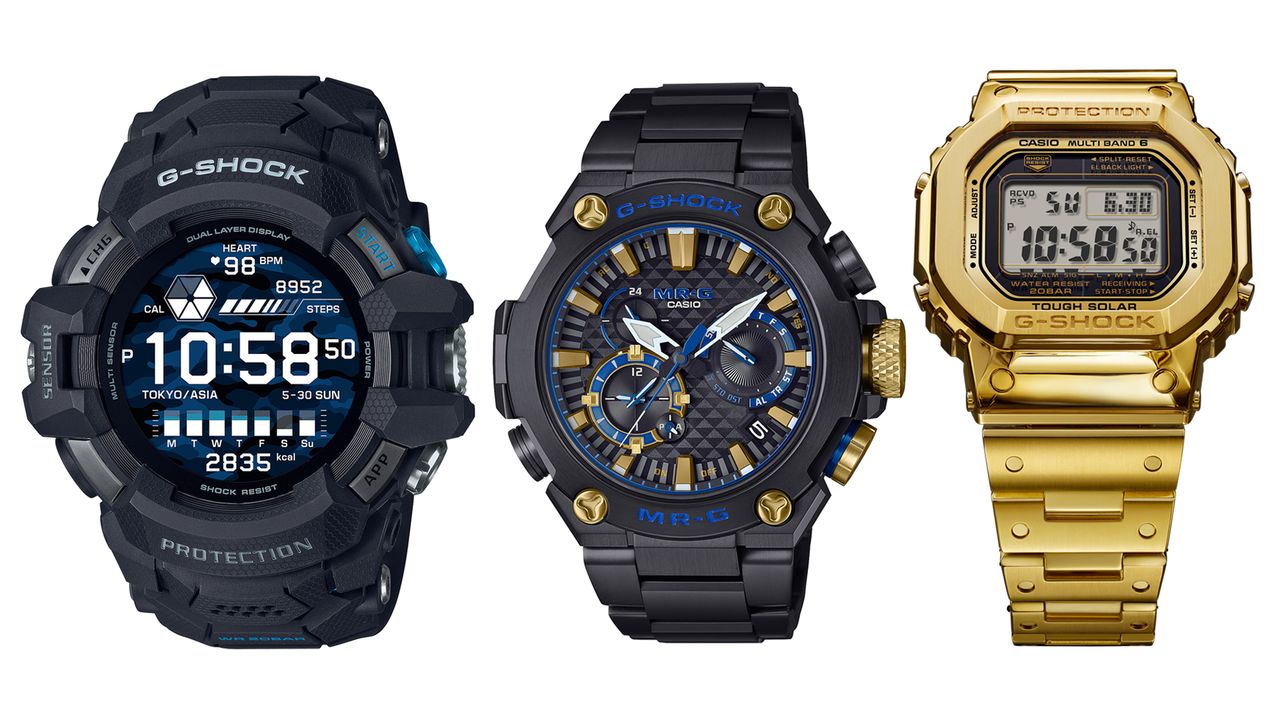
From left: The ¥88,000 G-Squad Pro GSW-H1000-1JR can be used as a fitness tracker; the top-of-the-line MRG-B2000B-1AJR, priced at ¥330,000, in traditional kachi-iro blue; the Casio thirty-fifth anniversary limited edition 18-carat “solid gold” G-D5000-9JR. (Courtesy of Casio)
G-Shock sales bear Ibe’s prediction out, with the 2010s being the most successful decade for the brand so far. It could be argued that the arrival of smartphones has actually helped boost the popularity of the brand by making people more time conscious. This has piqued the interest of individuals who might not have customarily worn a wristwatch and inspired them to seek out a model that fits their fashion sensibilities.
Durability is what draws many people to the G-Shock series, but Ibe insists that this is only part of the appeal of the brand. “Wearers trust in the toughness, which is why so many fans buy multiple models to match the different outfits in their wardrobe or how they are feeling on a given day.”
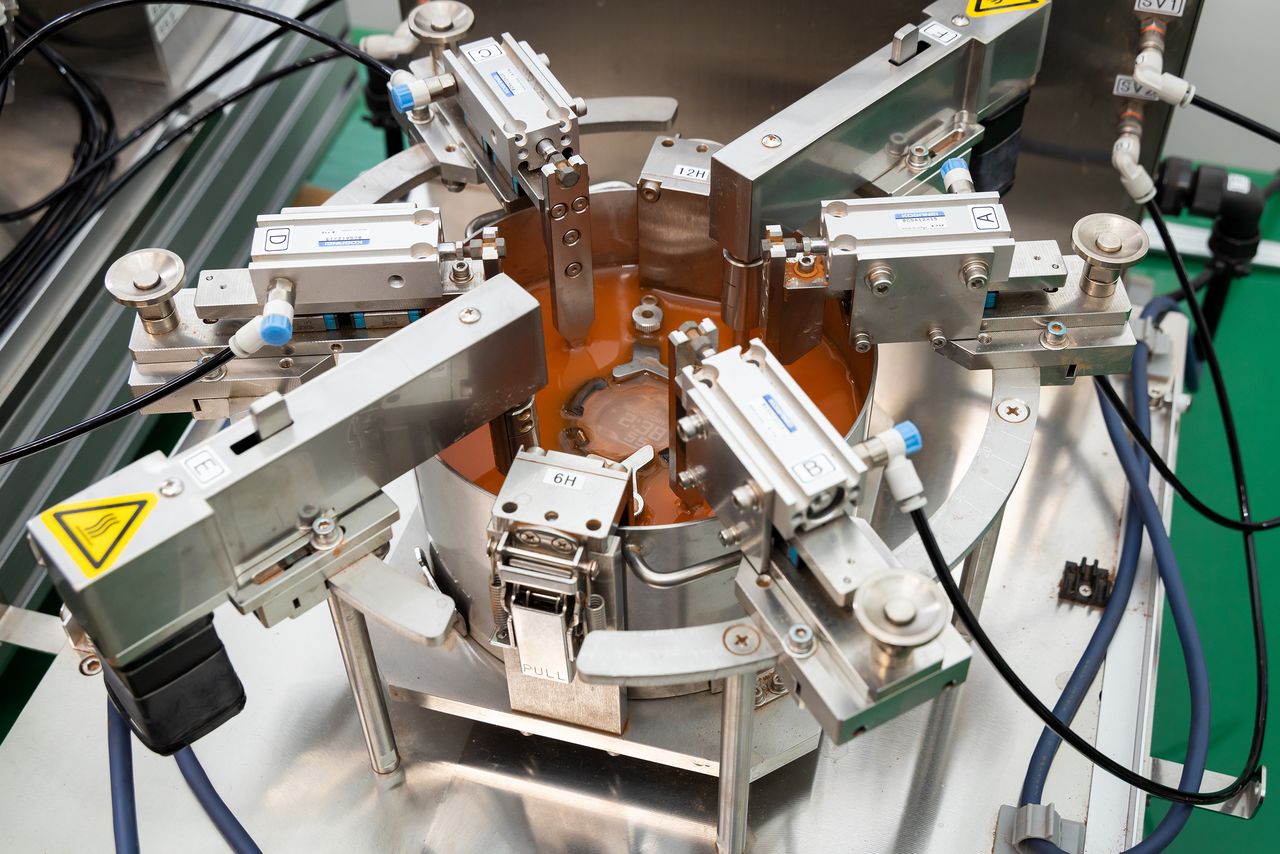
The G-Shock lab has more than 200 specialized testing machines, including this one filled with murky water that tests the durability of the buttons of mud-resistant models. Every G-Shock has to clear over 100 specific trials before being shipped.
Looking to the future, Ibe is working to inspire the next generation of engineers. He runs inventor workshops for elementary schoolchildren and others, and encourages young designers and engineers to think outside the box. In a world overflowing with choices, he stresses that searching out new ideas is of paramount importance. “Engineers today are incredibly talented, but many are far too serious for their own good,” he cautions. “They need to be bolder.” He points to his collaborations with Japanese artisans on models of the Oceanus Manta featuring Edo kiriko cut glass and another series inspired by traditional indigo dying. “I never cease to be amazed at the skills and techniques of Japan’s artisans. Tapping into this rich reservoir of talent and creativity offers an almost infinite source of innovation. My hope is that those who come after me will recognize this and use it to their advantage.”
Ibe is not quite ready to pass the G-Shock mantle yet, though. His next goal is to make a model tough enough to withstand the punishment of outer space, and maybe even sell it in an orbiting watch shop. If he succeeds in the endeavor by 2035, as he hopes, he will be 83 years old. Like his iconic watches, even at that age, his curiosity as a developer will almost certainly still be going strong.
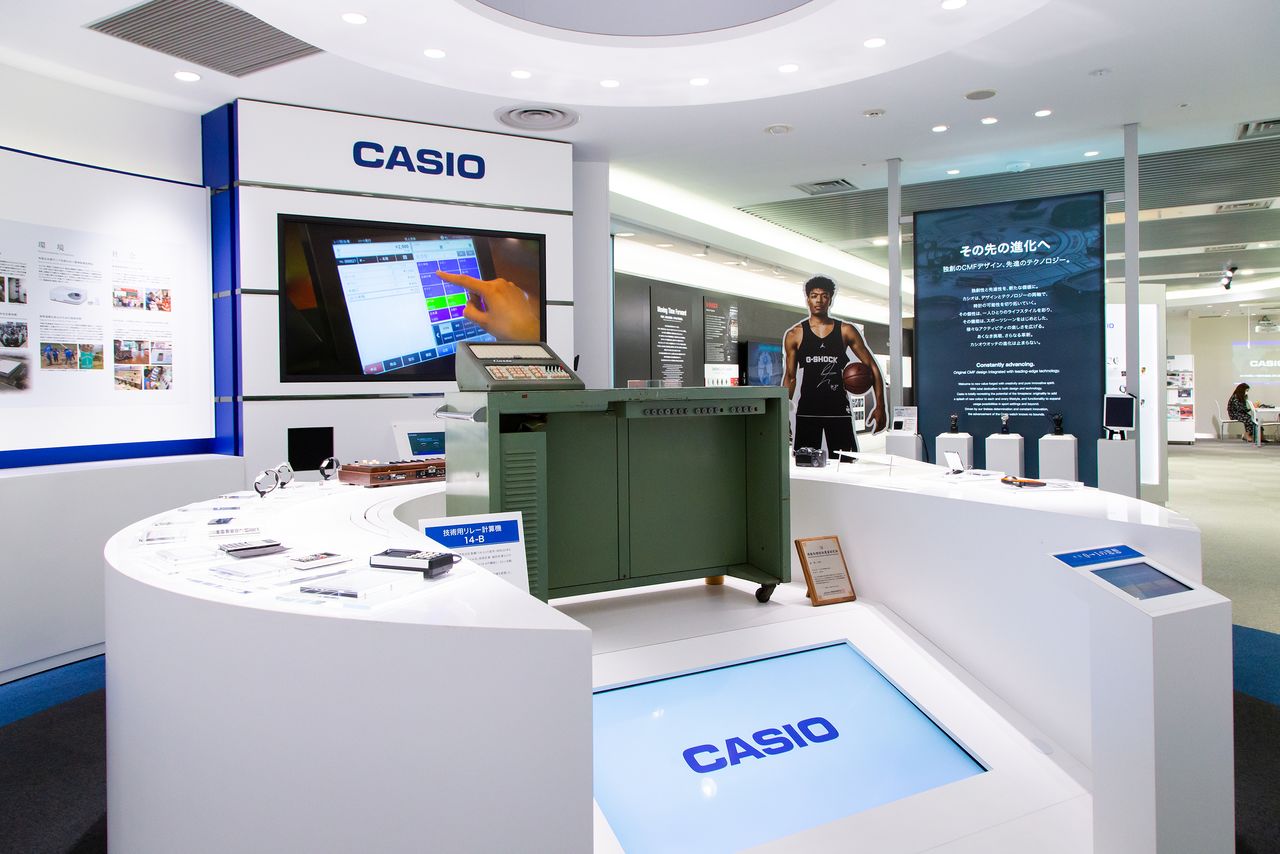
The showroom at Casio’s headquarters in Tokyo charts the company’s history since its founding in 1946. (Courtesy of Casio)
(Originally published in Japanese. Banner photo: G-Shock developer Ibe Kikuo at Casio’s Hamura R&D Center in Tokyo. All photos © Nippon.com, unless otherwise noted.)